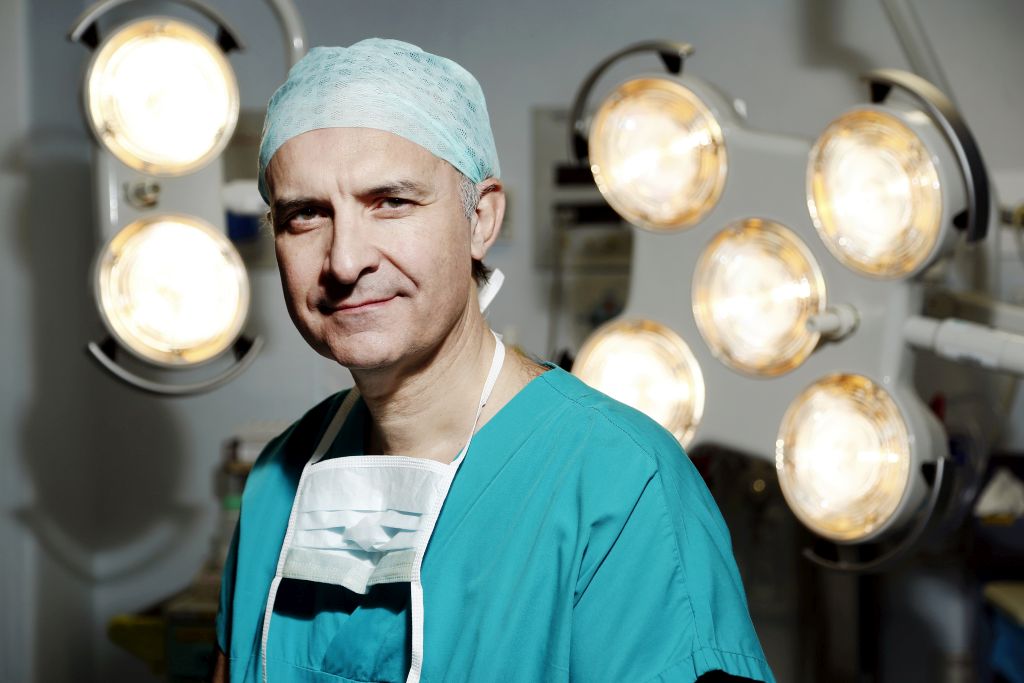MILAN (ITALPRESS) – A team of physicians and researchers from IRCCS Ospedale San Raffaele in Milan and Università Vita-Salute San Raffaele and bioengineers from Scuola Superiore Sant’Anna in Pisa, Italy, have achieved promising results in the treatment of spinal cord injury with an innovative protocol of high-frequency epidural electrical stimulation. The study, published in Science Translational Medicine, showed that this technique significantly reduces muscle spasticity and improves motor skills in patients with spinal cord injury. The research focused on the first two patients with incomplete spinal cord injuries, who recovered motor function in 2023 with the implantation of the spinal cord neurostimulator, a device already in use in pain therapy. The researchers applied targeted high-frequency stimulation that, combined with rehabilitation, significantly improved muscle strength, walking, and motor control. The applied stimulation protocol also reduced pathological reflexes and involuntary muscle contractions underlying muscle spasticity, promoting more fluid and natural movements. The patients examined in the study both had a traumatic spinal cord injury and during 2023 underwent an innovative spinal cord electrostimulator implantation procedure that allowed them, after a long rehabilitation course at the unit directed by Dr. Sandro Iannaccone, to walk again. At the end of the course, both patients showed significant improvements in their functional abilities, with one of them walking 175 meters without active stimulation. The patients involved in the study participated in an intensive rehabilitation program, which integrated low- and high-frequency stimulation with motor exercises. The research team then observed that high-frequency stimulation of the spinal cord is a safe way to inhibit pathological hyperresponsiveness of spinal circuits without generating discomfort in patients. “The spinal cord is naturally hyperresponsive to stimuli, which is necessary to promote normal fast reflexes. This hyperresponsiveness is usually balanced by the brain, which inhibits motor circuits when their activation is not required. However, in the case of spinal cord injury, the patient loses the inhibitory messages from the brain that regulate spinal hyperresponsiveness,” explains Simone Romeni, first author of the study and a researcher at Ecole Polytechnique Federale de Lausanne (EPFL) and IRCCS Ospedale San Raffaele, who continues, “We therefore believe that stimulation at frequencies on the order of kiloHertz (far greater than those used in previous studies), applied in our protocol, interferes with this pathological spinal hyperactivity, inhibiting its transmission to the muscles and consequently reducing spasms. “The spinal stimulation protocol developed and tested in this study represents a significant example of the extraordinary potential of neuroengineering applied to neurorehabilitation. This first result, the result of the valuable collaboration with colleagues at San Raffaele, lays the groundwork for the future development of new technological solutions, aimed at improving the quality of life of people with motor disabilities and enhancing the available therapeutic opportunities,” explains Silvestro Micera, professor at EPFL and Scuola Superiore Sant’Anna and study coordinator. “To date, there are 8 patients treated with the neurostimulator. This is a safe and effective surgical procedure that offers a new perspective in the treatment of patients with severe spinal cord injury. The combination of advanced technologies and personalized approaches to rehabilitation offers new perspectives for motor recovery, revolutionizing the treatment of spinal cord injury by reducing the side effects associated with currently available drug and surgical therapies,” adds Pietro Mortini, Full Professor of Neurosurgery at the University Vita-Salute San Raffaele (UniSR) and Chief of Neurosurgery at IRCCS Ospedale San Raffaele and also coordinator of the study. “Next steps will include further clinical trials in a larger number of patients to confirm these preliminary results. We are planning to extend the indications to different clinical conditions that we will define in the coming months. We are at the beginning of a promising new era for motor neurorehabilitation. We especially want to express our deep gratitude to the patients who have trusted us,” Professor Mortini concludes.(ITALPRESS).
Photo: St. Raphael Press Office – Image Building

